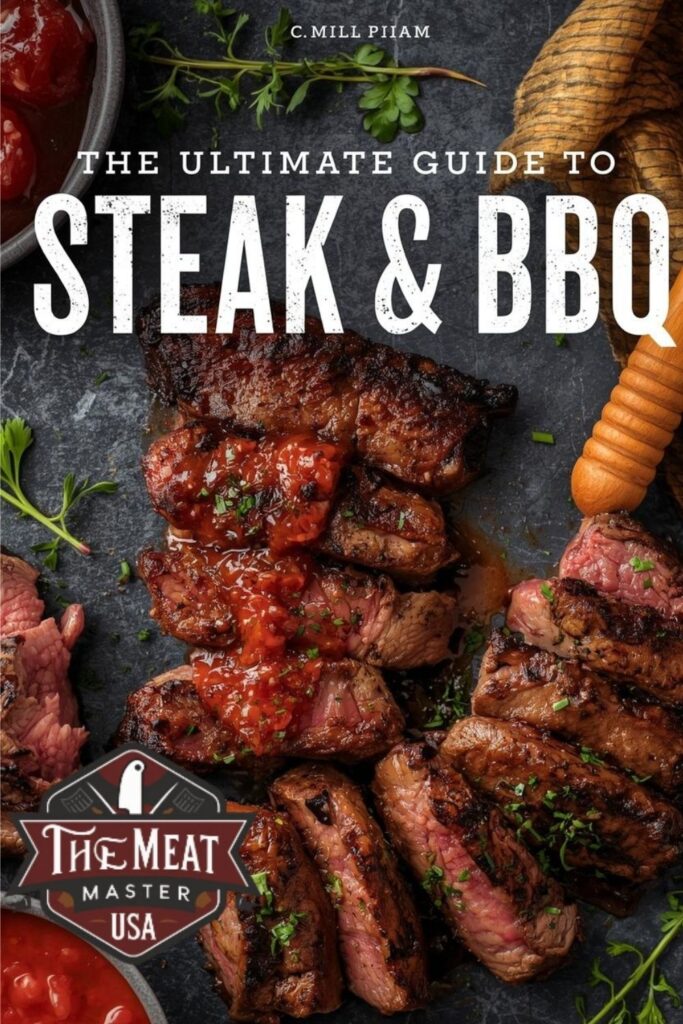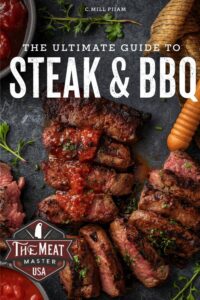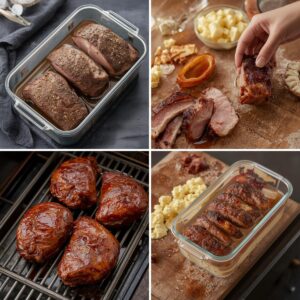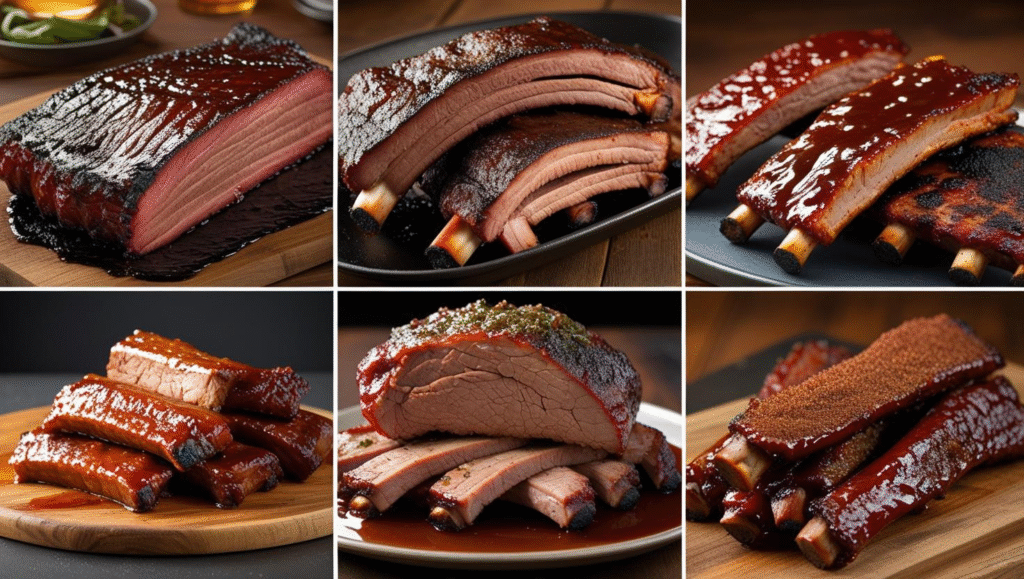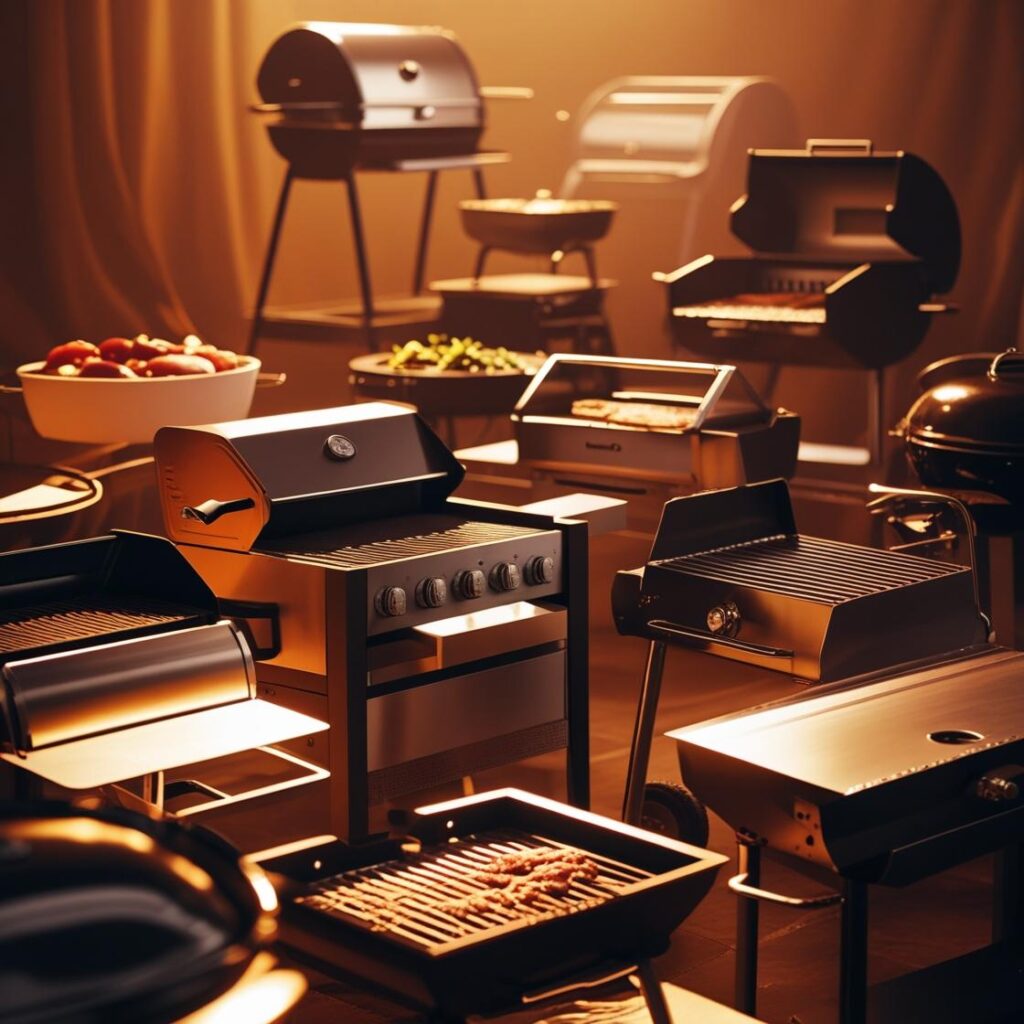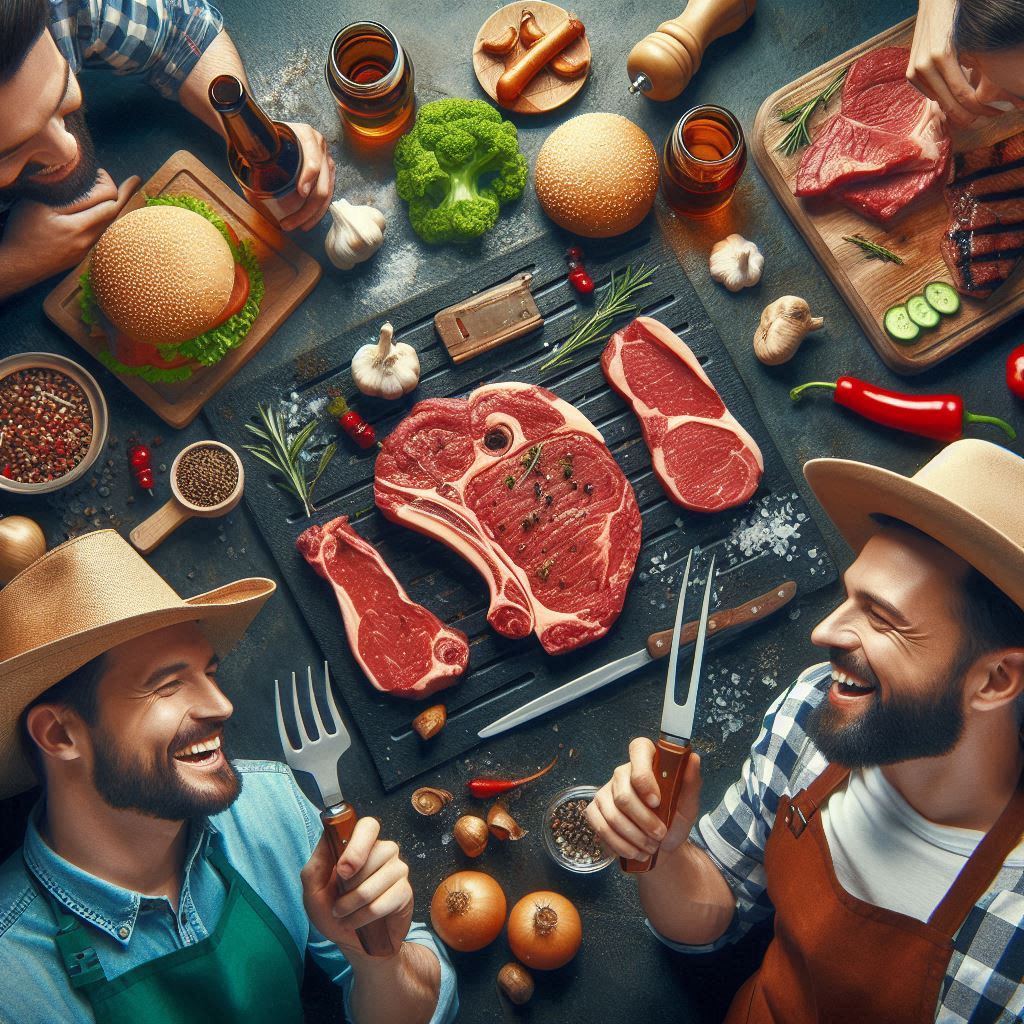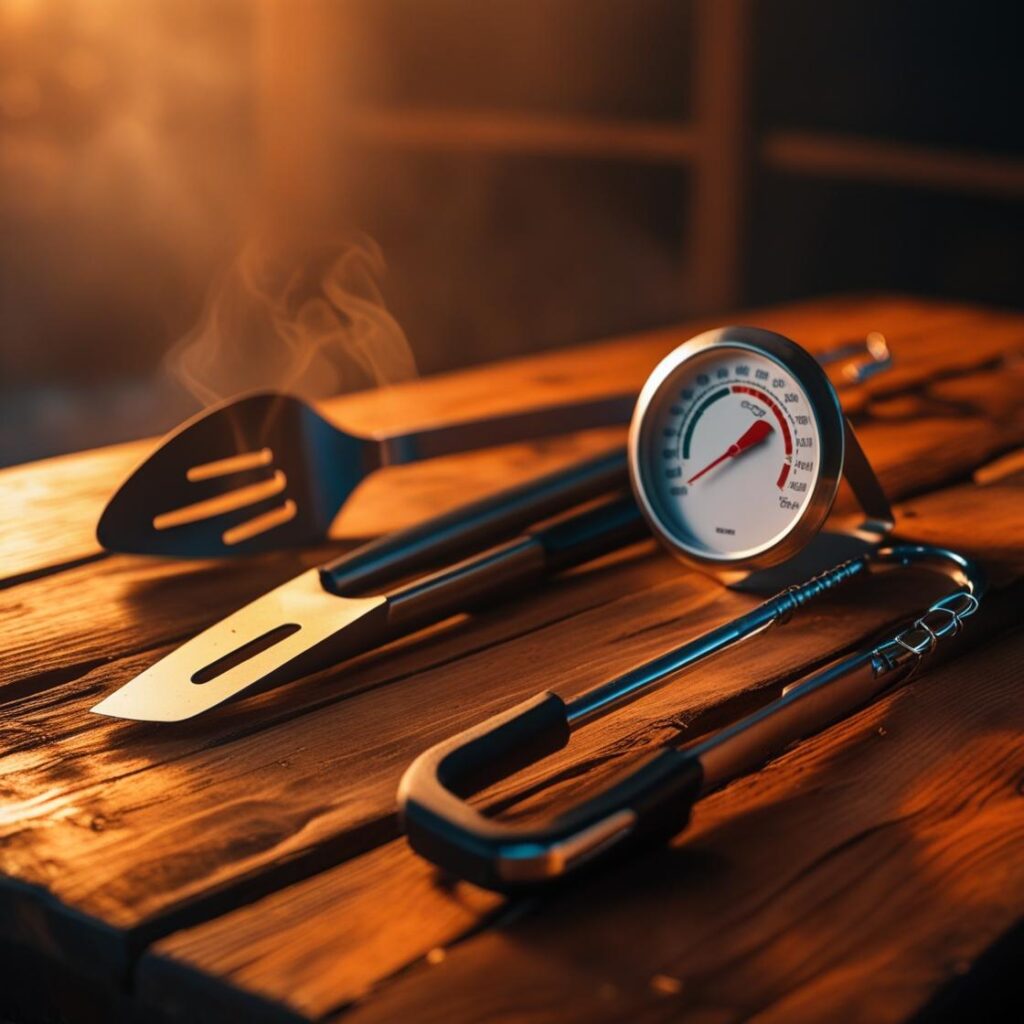Cooking a perfect steak on the grill is one of life’s great pleasures. The sizzle of fat on hot grates, the aroma of charring meat, and the satisfaction of slicing into a juicy, tender interior are unmatched. But the journey to a great grilled steak begins long before the fire is lit. It starts with a fundamental question that every grill master must answer: Best Cuts of Steak for BBQ? The answer is not a simple one, as the ideal cut depends on your budget, your preferred flavor, and your desired outcome.
This comprehensive guide will explore the very best cuts for the grill, delve into the science behind a perfect steak, and provide you with the tools and techniques you need to become a true BBQ aficionado.
Understanding What Makes a Cut Perfect for BBQ
Before we dive into the specific cuts, it’s essential to understand the characteristics that make a steak ideal for the high heat of a grill. Not all cuts are created equal, and some are better suited for the unique cooking environment of a barbecue.
The Role of Marbling
Marbling is the intramuscular fat that appears as white flecks and streaks within the lean muscle of the steak. It is the single most important factor for a delicious, juicy steak. As the meat cooks, this fat melts and bastes the steak from the inside out, imparting incredible flavor and keeping the meat moist. When you’re searching for the Best Cuts of Steak for BBQ?, always look for well-marbled examples. The higher the grade (Prime, Choice, Select), the more marbling the steak will have.
The Importance of Thickness
For grilling, a thick steak is almost always better than a thin one. A steak that is at least 1.5 inches thick gives you more control over the cooking process. It allows you to develop a deep, flavorful crust on the outside without overcooking the interior. This is a key principle, especially when using a two-zone grilling method, which we will discuss later.
The Butcher’s Craft
A knowledgeable butcher can be your best resource in finding the Best Cuts of Steak for BBQ?. They can guide you on the different grades, explain where each cut comes from, and even custom-cut a piece of meat to your exact specifications. Don’t be shy about asking questions; a good butcher loves to share their passion.
These are the classic, high-end cuts that are revered for their exceptional flavor and tenderness. They are often the most expensive, but for a special occasion or a serious craving, they are worth every penny.
Ribeye: The King of Flavor
The ribeye is arguably the most beloved steak for grilling. It comes from the rib section of the cow, an area with a large amount of intramuscular fat. This marbling is what gives the ribeye its signature rich, buttery flavor and juicy texture. A bone-in ribeye, also known as a Tomahawk steak, provides even more flavor as the bone contributes to the overall taste and insulates the meat.
When grilling a ribeye, a two-zone grilling method is your best friend. Sear it over high, direct heat for a beautiful crust, then move it to the cooler, indirect side to finish cooking slowly to your desired doneness. This prevents the outside from burning before the inside is cooked through.
Internal Link: To master this technique, see our in-depth guide on Reverse Searing: How to Cook the Perfect Steak Every Time.
New York Strip: The Stripper’s Classic
The New York strip is a classic for a reason. Cut from the short loin, it is leaner than a ribeye but still has a good amount of marbling and a flavorful fat cap along one side. It has a firm, beefy texture and a robust flavor that stands up well to high heat.
The strip is forgiving on the grill and is an excellent choice for those who love a clean, straightforward steak flavor. It’s a fantastic cut to showcase your grilling skills, as it cooks evenly and reliably. The New York strip is a consistently strong contender when you’re looking for the Best Cuts of Steak for BBQ?.
Porterhouse & T-Bone: The Best of Both Worlds
These two cuts are often confused, and while similar, they have a key difference. Both are cut from the short loin and feature a T-shaped bone separating two different steaks: a New York strip on one side and a tenderloin (filet mignon) on the other. The porterhouse, however, must contain a larger portion of the tenderloin to be given its name.
Grilling a porterhouse or T-bone can be a challenge because the two muscles cook at different rates; the tenderloin is leaner and cooks faster. The key is to position the steak on the grill so the smaller tenderloin side is on the cooler, indirect heat zone while the strip side is over the direct heat.
Filet Mignon: The Ultimate in Tenderness
The filet mignon is cut from the tenderloin, a muscle that does almost no work, making it the most tender cut of beef. It has a delicate, almost buttery texture and a mild flavor. Because it is so lean, it lacks the rich, beefy flavor of a ribeye, but it makes up for it in incredible tenderness.
When cooking a filet on the BBQ, its lack of fat can make it prone to drying out. It benefits from a hot sear followed by a careful, gentle finish on indirect heat. It’s also a great cut for wrapping in bacon, which adds a layer of fat and flavor to help it stay moist.
Best Cuts of Steak for BBQ? – The Butcher’s Favorites
These cuts were once considered hidden gems but have exploded in popularity due to their unique flavor profiles, surprising tenderness, and great value. They offer a fantastic alternative to the more expensive premium cuts.
Flat Iron Steak: The Tender All-Rounder
The flat iron steak is one of the most tender cuts of beef, second only to the filet mignon. It is cut from the shoulder (chuck) and is well-marbled. The defining characteristic of the flat iron is that the tough connective tissue has been removed, leaving a tender, flavorful steak that is perfect for a quick cook over high heat.
The flat iron is a no-fuss steak that delivers a fantastic beefy flavor and tenderness for a fraction of the price of a ribeye. It is a top choice for anyone asking, “What are the Best Cuts of Steak for BBQ? on a budget?”
Hanger Steak: The Rich and Beefy Choice
Also known as the “butcher’s steak,” the hanger steak gets its name because it hangs from the diaphragm of the cow and is often kept by butchers for themselves. It has an incredibly rich, beefy flavor and a coarse texture similar to a flank or skirt steak. The key to a good hanger steak is to cook it hot and fast, and most importantly, slice it against the grain to maximize its tenderness.
Tri-Tip: The West Coast Star
The tri-tip is a triangular cut from the bottom sirloin. It’s a versatile cut that can be grilled whole or cut into individual steaks. It has a beefy flavor and a nice level of fat, making it a favorite for grilling and smoking. When grilled whole, it benefits from a two-zone setup, allowing you to get a great sear before slowly bringing it up to temperature.
How to Cook the Best Cuts of Steak for BBQ?
Choosing the right cut is only the beginning. The technique you use on the grill is what truly unlocks its potential.
The Importance of Temperature and Doneness
Cooking to the right internal temperature is non-negotiable for a perfect steak. A good meat thermometer is your most essential tool.
- Rare: 120-125°F (49-52°C) – Cool, red center.
- Medium-Rare: 130-135°F (54-57°C) – Warm, red center. This is the recommended doneness for most cuts.
- Medium: 140-145°F (60-63°C) – Warm, pink center.
The Two-Zone Grilling Method
A two-zone fire is the secret weapon of the best BBQ cooks. It gives you a hot zone for searing and a cooler zone for gentle, controlled cooking.
- Charcoal Grill: Pile the coals on one side of the grill, leaving the other side empty. This creates a hot, direct heat zone and a cooler, indirect heat zone.
- Gas Grill: Turn the burners on one side to high heat and leave the other burners off.
This technique is especially vital for thick cuts and for answering the question, “What are the Best Cuts of Steak for BBQ? to cook without overdoing them?”
The Art of the Perfect Sear
The sizzle you hear and the crust you see are the result of the Maillard reaction, a complex chemical reaction between amino acids and sugars that creates hundreds of new flavor compounds. To get a great sear, your grill grates must be clean and screaming hot. Sear each side of the steak for just a few minutes, until a deep brown crust forms.
Beyond the Basics: Elevating the Best Cuts of Steak for BBQ?
Mastering the fundamentals is key, but a few extra steps can take your steak from great to legendary.
The Resting Phase
After cooking, you must let your steak rest for at least 5-10 minutes. This allows the juices, which have been pushed to the center by the heat, to redistribute evenly throughout the steak. Skipping this step means a juicy steak on the grill will become a dry steak on your plate.
Brining and Marinading
While premium cuts don’t require it, a marinade or brine can be used to add flavor and moisture to leaner cuts. A simple salt brine or a flavorful marinade can work wonders on cuts like skirt steak or flank steak. The principle is similar to how brining adds moisture to pork, as discussed in our guide on The Juiciest Pork Cuts for Smoking and Grilling.
Sourcing and Quality
Understanding the USDA beef grading system is crucial.
- Prime: The highest quality, with abundant marbling.
- Choice: Very high quality, widely available, and a great balance of flavor and tenderness.
- Select: The leanest grade, with the least marbling. Choosing a good grade is fundamental to finding the Best Cuts of Steak for BBQ?. For more information on beef grading, the USDA is the authoritative source. A deeper dive into the origin of various beef cuts and their characteristics can be found in our guide to Beef Cuts Explained.
The Modern Grill Master’s Checklist for Best Cuts of Steak for BBQ?
To help you get ready, here’s a quick checklist of everything you’ll need.
- The Right Cut: Pick from the premium or value cuts discussed.
- Essential Tools: A meat thermometer, long-handled tongs, and a cast iron skillet for the perfect reverse sear.
- Simple Seasoning: A generous amount of coarse salt and black pepper is all you need. You can always add more flavor with a finishing butter or sauce.
- External Resource: For a wealth of grilling tips and delicious recipes, check out the resources from Food & Wine Magazine.
Conclusion
The pursuit of the perfect grilled steak is a rewarding journey. By understanding the characteristics of the Best Cuts of Steak for BBQ?, mastering key techniques like the two-zone fire, and using the right tools, you can consistently produce a steak that is juicy, tender, and bursting with flavor. The next time you fire up the grill, choose your cut wisely, respect the process, and get ready to enjoy a truly unforgettable meal.
Best Cuts of Steak for BBQ? FAQs:
What are the Best Cuts of Steak for BBQ? The best cuts for BBQ are typically those with good marbling, such as ribeye, New York strip, and porterhouse, but cuts like flat iron and tri-tip also offer great flavor and value.
How important is a meat thermometer for BBQ steak? A meat thermometer is essential for achieving the perfect doneness, as cooking by time or feel can easily lead to an overcooked or undercooked steak.
Should I rest my steak after grilling? Yes, resting your steak for 5-10 minutes is crucial to allow the juices to redistribute, ensuring a tender and juicy result.
Is a thicker steak better for grilling? Yes, a thicker steak (1.5 inches or more) is better for grilling as it allows you to get a great sear on the outside without overcooking the center.
What is two-zone grilling? Two-zone grilling is a technique that creates a hot, direct heat area and a cooler, indirect heat area on your grill, which is perfect for cooking thick steaks to perfection.

